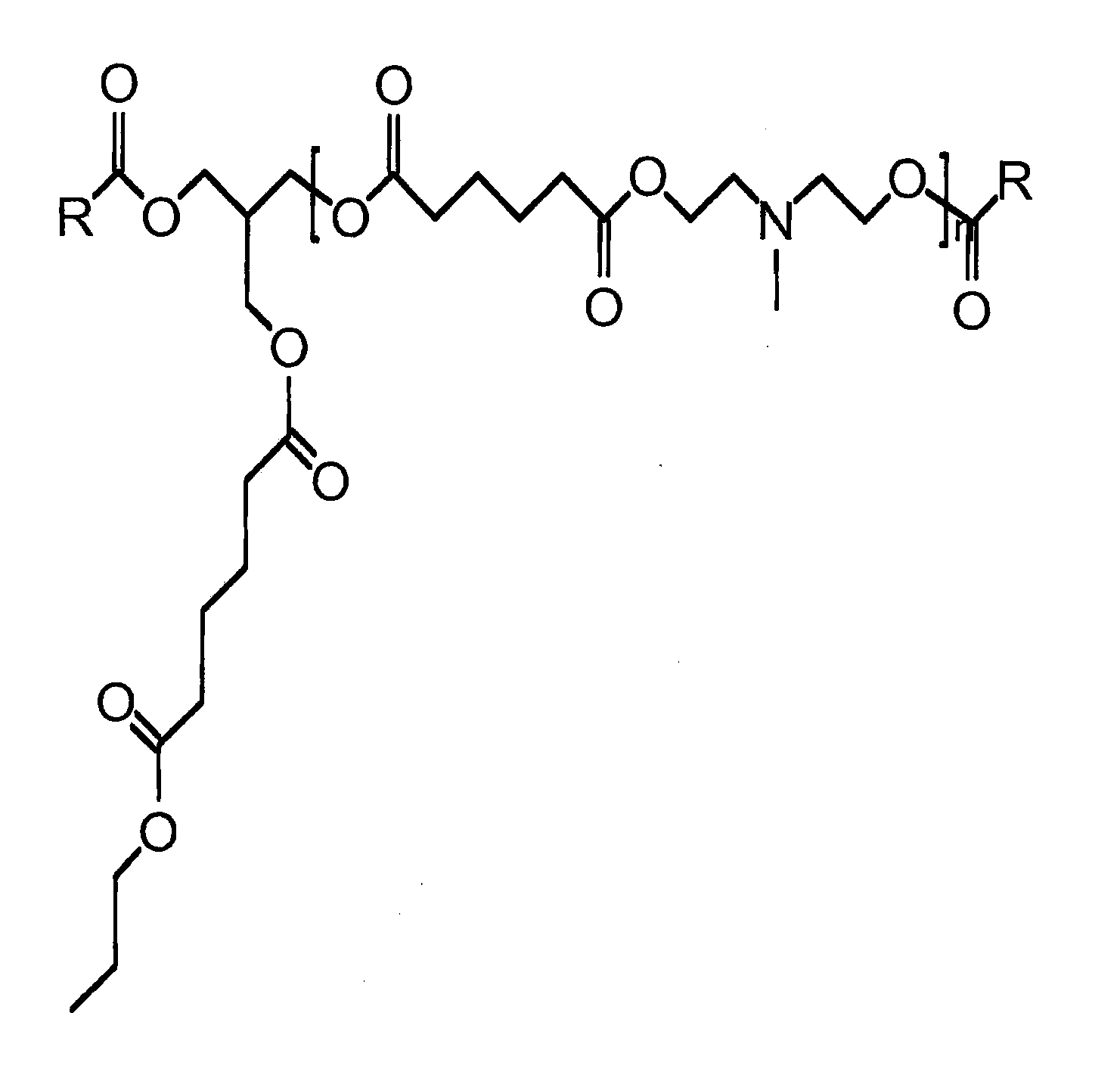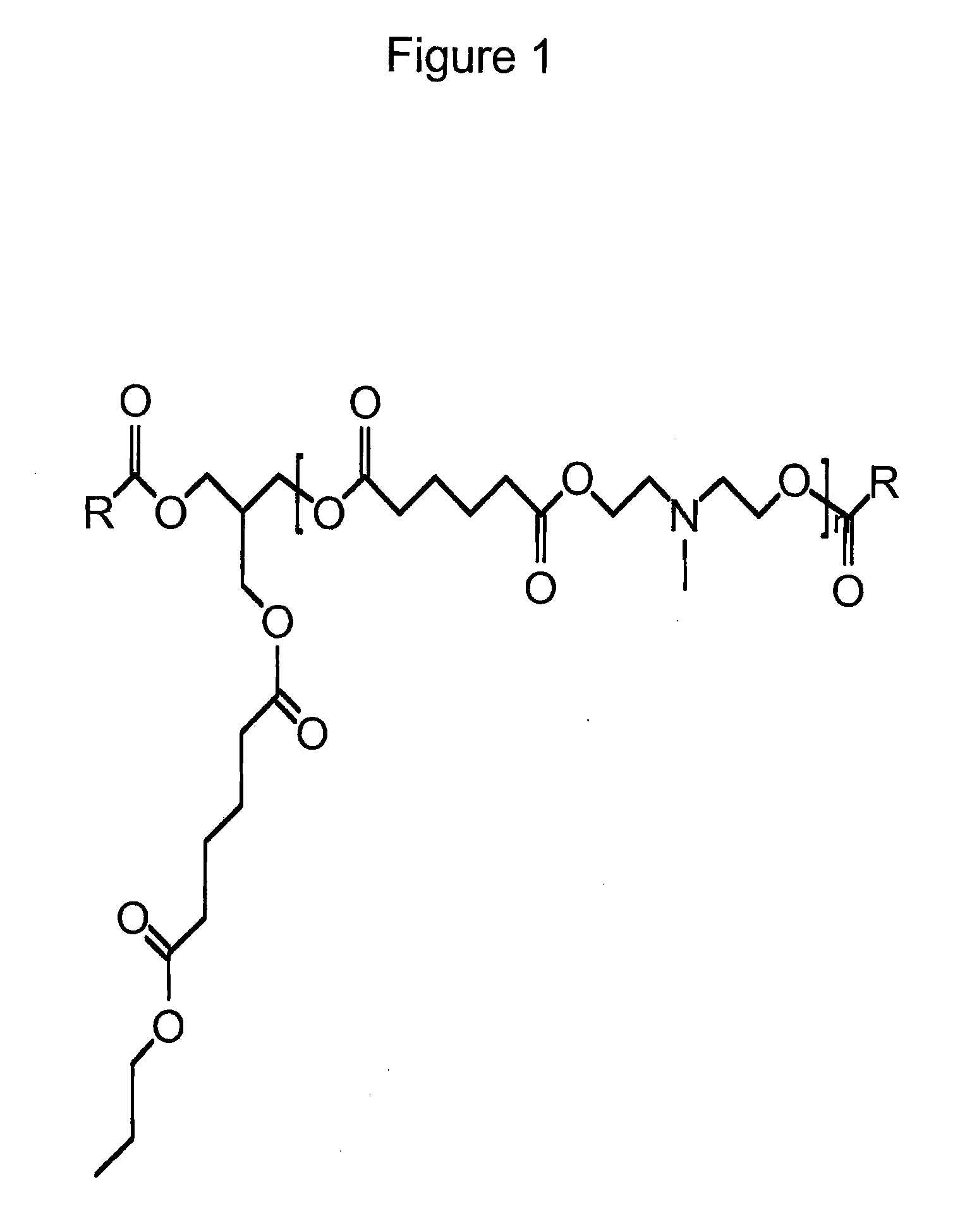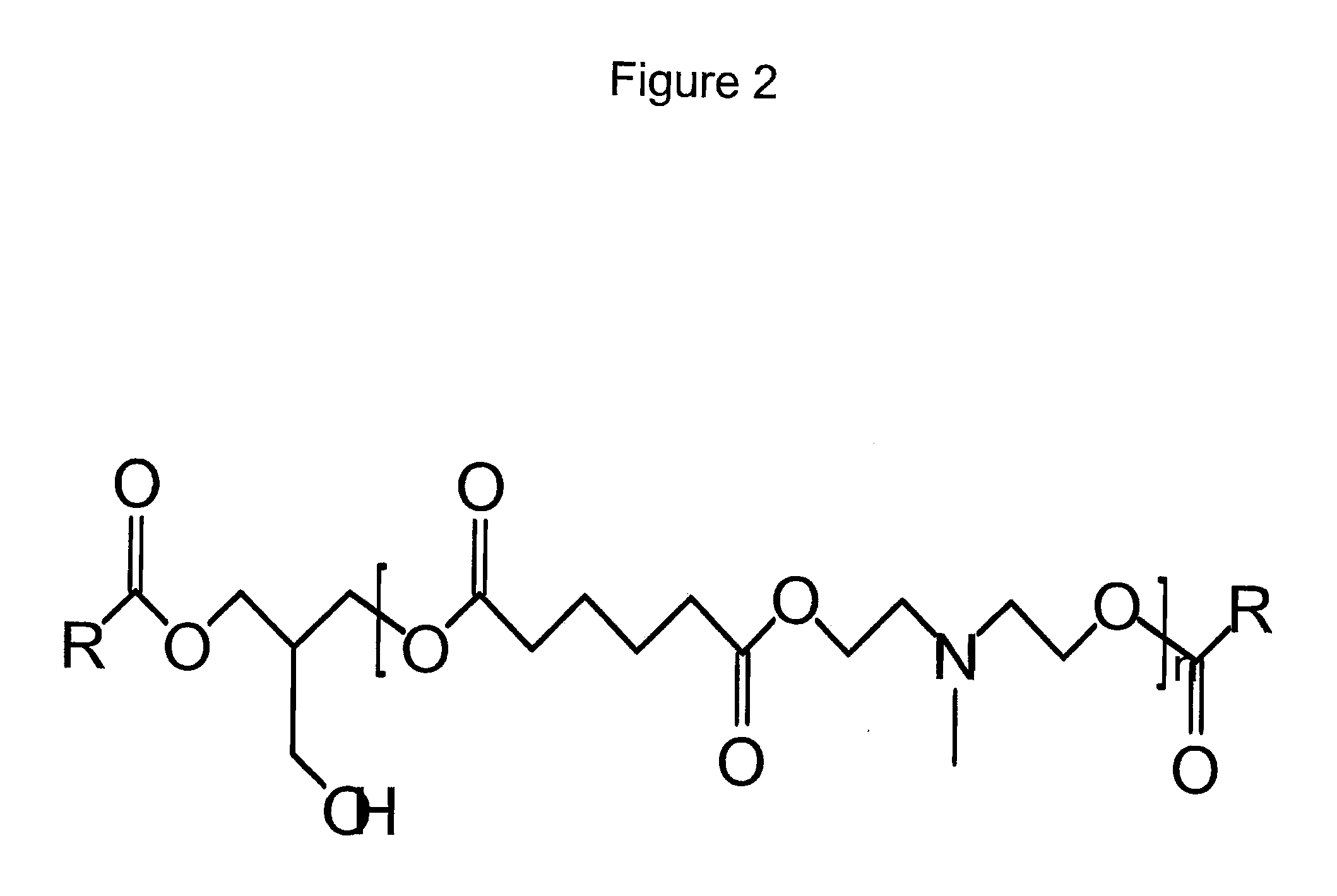Tertiary Amine Functional Complex Polyester Polymers And Methods Of Production And Use
a functional complex and polyester polymer technology, applied in the field of additives, to achieve the effect of easy emulsification in water, improved substantivity to skin and hair, and improved emulsification efficiency
- Summary
- Abstract
- Description
- Claims
- Application Information
AI Technical Summary
Benefits of technology
Problems solved by technology
Method used
Image
Examples
example 1
[0030]When evaluating the invention, an initial matrix of prototypes were developed to evaluate their properties. Each experimental polyesteramine prototype is identified by Types 1-6. Table 1 below shows the number of moles of each ingredient employed for each prototype. By varying properties, such as molecular weight, alkyl chain type and density, polyol type and density, and tertiary amine group density, the structure and performance of each prototype can be controlled.
[0031]The prototypes were prepared by charging the ingredients to a stirred batch reactor in the presence of a small quantity of antioxidant to preserve color. The reactants were heated with continuous inert gas sparging to between about 170° C. and about 200° C. The acid value and amine value were monitored, and the reaction was stopped by cooling when the acid value reached 10 or lower.
TABLE 1Summary of Properties of Polyesteramine Prototypes Type 1 through Type 6.Type 1Type 2Type 3Type 4Type 5Type 6ComponentMole...
example 2
[0032]The polyesteramine prototypes were tested internally for substantivity using the Rubine Dye test protocol. In the Rubine Dye test, the prototypes were benchmarked against Dehyquart® L-80 (dicocoylethyl hydroxyethylmonium methosulfate (and) propylene glycol), a commercial ester quaternary. The materials and equipment used in performing the Rubine Dye analysis were:
[0033]Bleach blond hair (De Meo Brothers);
[0034]Lumicrease Bordeaux 3LR powder-Dye (Clariant Corporation);
[0035]Glacial acetic acid, UPS grade;
[0036]Hydrogen peroxide, 10% solution;
[0037]Glue gun;
[0038]Glue sticks;
[0039]Plastic sheet;
[0040]Chromameter (Minolta CR-300);
[0041]Digital camera (Olympus digital camera, model C2020Z);
[0042]Polyesteramine Type 1;
[0043]Polyesteramine Type 2;
[0044]Polyesteramine Type 3;
[0045]Polyesteramine Type 4;
[0046]Polyesteramine Type 5;
[0047]Polyesteramine Type 6; and
[0048]Dehyquart L-80 (Cognis Corporation).
[0049]The protocol used to perform the Rubine Dye analysis on polyesteramine proto...
example 3
[0057]A second matrix of polyesteramine products was then designed and synthesized to further explore the structure / performance relationships with molecules surrounding the structural characteristics of the better performing polyesteramines, the Type 5 and Type 6 products. The synthesis method previously described was again used. Table 3 shows the results obtained from these prototypes. The above materials were also evaluated using the Rubine Dye test for substantivity. Table 4 lists the results obtained.
TABLE 3Summary of properties of improved polyesteramine prototypes.S 1500S 1750O 1250O 1500O 1700C 1150C 1450C 1600ComponentMoles MDEA 3.0 4.0 2.0 3.0 4.0 2.0 3.0 4.0Moles Adipic 4.0 5.0 3.0 4.0 5.0 3.0 4.0 5.0Moles Polyol 2.0 2.0 2.0 2.0 2.0 2.0 2.0 2.0Moles Acid 2.0 2.0 2.0 2.0 2.0 2.0 2.0 2.0Polyol MoietyGlycerolGlycerolGlycerolGlycerolGlycerolGlycerolGlycerolGlycerolAlkyl MoietyIso C18Iso C18C-18:1C-18:1C-18:1C8-C18C8-C18C8-C18(oleic)(oleic)(oleic)(co...
PUM
| Property | Measurement | Unit |
|---|---|---|
| acid value | aaaaa | aaaaa |
| acid value | aaaaa | aaaaa |
| melting points | aaaaa | aaaaa |
Abstract
Description
Claims
Application Information
 Login to View More
Login to View More - R&D
- Intellectual Property
- Life Sciences
- Materials
- Tech Scout
- Unparalleled Data Quality
- Higher Quality Content
- 60% Fewer Hallucinations
Browse by: Latest US Patents, China's latest patents, Technical Efficacy Thesaurus, Application Domain, Technology Topic, Popular Technical Reports.
© 2025 PatSnap. All rights reserved.Legal|Privacy policy|Modern Slavery Act Transparency Statement|Sitemap|About US| Contact US: help@patsnap.com



